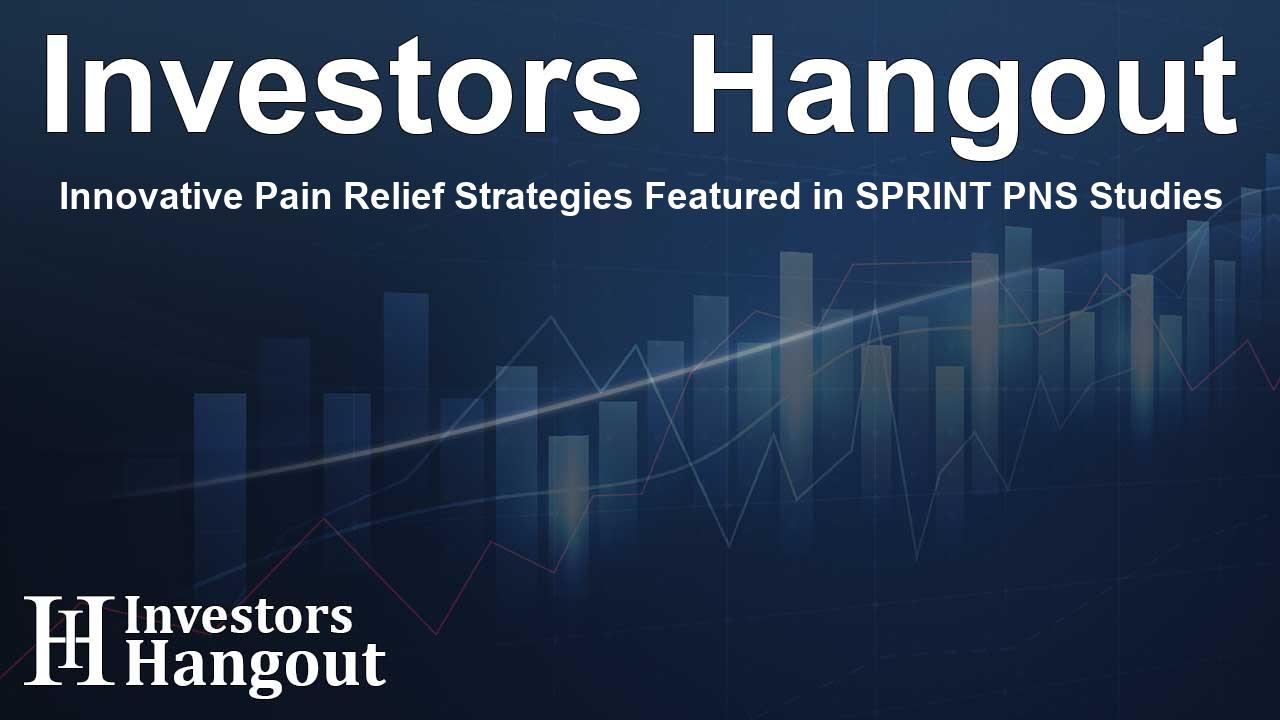Innovative Pain Relief Strategies Featured in SPRINT PNS Studies

SPR to Highlight PNS Advances at Major Pain Conference
Leading medical professionals are set to unveil groundbreaking insights regarding the SPRINT PNS System at the upcoming annual conference of the American Society of Pain & Neuroscience. This platform offers an invaluable opportunity for physicians to explore the extensive applications of the SPRINT PNS in treating various types of pain disorders including chronic postoperative pain and migraine-induced head pain.
Noteworthy Abstracts on Pain Management
Among the key presentations is a vital analysis entitled "Percutaneous 60-Day Peripheral Nerve Stimulation Relieves Chronic Postoperative Pain After Knee Surgery." This insightful study highlights the challenges faced by patients following total knee arthroplasty, a predominant solution for chronic knee pain.
Understanding Postoperative Pain Solutions
The reality is that while knee surgeries significantly improve patient mobility, a troubling 10 to 20 percent still endure persistent postoperative pain. This particular research explores the efficacy of the 60-day PNS method, revealing that many participants experienced considerable pain reduction and substantial improvements in daily activity engagement, highlighting its potential as a go-to solution for those struggling post-surgery.
Impact on Head Pain and Migraines
Another groundbreaking study focuses on the first-ever application of peripheral nerve stimulation in managing occipital head pain while patients simultaneously suffer from migraines. This study demonstrated notable success rates, where 82% of participants reported significant pain relief after three months, illustrating the transformative effect of innovative treatment methods.
Assessing Chronic Low Back Pain Treatments
The RESET study presents another crucial finding, comparing 60-day PNS to standard interventional management for chronic low back pain. The results are impressive, indicating that the PNS method notably reduces pain levels more effectively than traditional approaches, proving its worth in pain management conversations.
Diverse Applications of PNS Technology
The versatility of the 60-day PNS technique also extends to managing occipital head pain. Participants in a related study enjoyed marked improvements in their quality of life over a 12-month period following treatment, underscoring the option’s significance in the struggle against chronic pain.
Proven Efficacy in Radicular Pain
An intriguing retrospective review of patients experiencing radicular back pain highlights the successes of this technology as well. Not only did most participants achieve substantial pain relief, but a remarkable 70% were classified as responders to the treatment.
About SPRINT PNS System
The SPRINT PNS System epitomizes a revolution in pain management, offering a unique treatment option that addresses chronic pain without the need for permanent implants or long-term pharmacological solutions. It has been extensively studied, demonstrating promising results for various pain conditions, including low back pain, knee pain, and postoperative discomfort.
Designed to alleviate chronic and acute pain for its users, the SPRINT PNS System has become a preferred option for patients seeking less invasive alternatives. It represents a significant breakthrough in the neuromodulation field, integrating safety, efficacy, and patient preferences into pain management strategies.
Why Choose SPR’s PNS System?
SPR is focused on providing innovative, drug-free solutions for pain management. Our PNS system is a paradigm shift for patients and practitioners alike, allowing for a non-invasive, minimized intervention approach to dealing with acute and chronic pain. SPR aims to improve patients’ quality of life through its advanced pain relief methods.
Contact Information
If you would like to learn more about the advancements in pain management offered by SPR, please reach out to Dave Folkens, who leads our public relations efforts. Dave.Folkens@SPRPainRelief.com.
Frequently Asked Questions
1. What is the SPRINT PNS System?
The SPRINT PNS System is a non-invasive pain management treatment that alleviates chronic pain through peripheral nerve stimulation without the need for surgery.
2. How does the SPRINT PNS System work?
This system reconditions the central nervous system, providing lasting relief from chronic pain issues like low back, knee, and postoperative discomfort.
3. What types of pain can be treated with SPRINT PNS?
The SPRINT PNS System is effective for managing chronic postoperative pain, migraines, low back pain, and occipital head pain, among others.
4. How long does treatment last?
The SPRINT PNS System is designed for a treatment duration of up to 60 days, providing significant pain relief during that period.
5. Is the SPRINT PNS System safe?
Yes, the system has been studied extensively and is recognized for its safety and effectiveness, although common adverse events may include skin irritation.
About The Author
Contact Riley Hayes privately here. Or send an email with ATTN: Riley Hayes as the subject to contact@investorshangout.com.
About Investors Hangout
Investors Hangout is a leading online stock forum for financial discussion and learning, offering a wide range of free tools and resources. It draws in traders of all levels, who exchange market knowledge, investigate trading tactics, and keep an eye on industry developments in real time. Featuring financial articles, stock message boards, quotes, charts, company profiles, and live news updates. Through cooperative learning and a wealth of informational resources, it helps users from novices creating their first portfolios to experts honing their techniques. Join Investors Hangout today: https://investorshangout.com/
The content of this article is based on factual, publicly available information and does not represent legal, financial, or investment advice. Investors Hangout does not offer financial advice, and the author is not a licensed financial advisor. Consult a qualified advisor before making any financial or investment decisions based on this article. This article should not be considered advice to purchase, sell, or hold any securities or other investments. If any of the material provided here is inaccurate, please contact us for corrections.
